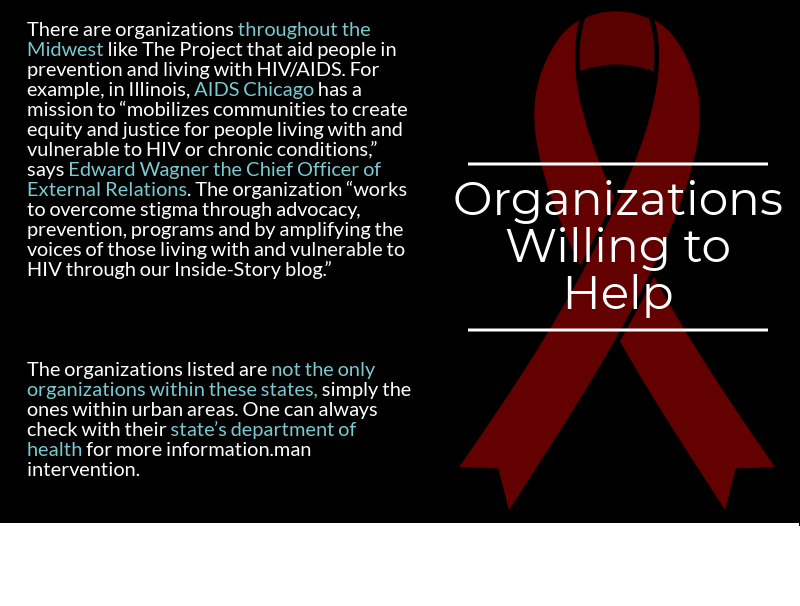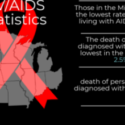Recently, there have been several depictions of HIV/AIDS (Human Immunodeficiency Virus/Acquired Immune Deficiency Syndrome) in shows like ABC’s How to get Away with Murder, Amazon’s Transparent, HBO’s Looking, and Logo TV’s Finding Prince Charming.
The recent successes of the live showing of RENT on FOX and Bohemian Rhapsody, the movie, have allowed for HIV/AIDS to make a resurgence in popular culture and allow for the disease to be seen in people who the world loved.
During his State of the Union Address on Feb. 5, President Donald Trump spoke on eradicating HIV/AIDS in the next decade. “My budget will ask Democrats and Republicans to make the needed commitment to eliminate the HIV epidemic in the United States within 10 years,” Trump said during the address. “Together, we will defeat AIDS in America.”
Only time will tell if this is possible.
Nonetheless, the disease is still prevalent, according to the CDC website on HIV, HIV diagnoses remained stable throughout the country but decreased in the Midwest by six percent.
HIV/AIDS is a disease that carries a heavy stigma. Once known as “The Gay Plague” research and knowledge about HIV/AIDS has increased significantly. In the Midwest this is seen through sometimes unique dispersal areas and innovative treatments.
The State of HIV/AIDS Today in the Midwest
Overall, according to the Center for Disease Control report on HIV Surveillance for 2017, the rate throughout the whole country with infections classified as stage 3 (AIDS) decreased.

What makes the Midwest unique besides its lower population, is that some states have distributions of persons with HIV/AIDS that would not necessarily be conducive to a population with a lower rate of infection. The way the people are spread out makes full treatment difficult.
Iowa Department of Health – a Unique Case in the Midwest
The Iowa Department of Health conducts its own surveillance on the state’s population living with HIV/AIDS. As Nicole Kolm-Valdivida, the project manager of the HIV/AIDS surveillance program, states, “The purpose of the Surveillance Programs are to help monitor the epidemic and have an understanding of how many people have been diagnosed and/or are living with the HIV, STDS, Hep-C here in Iowa.”
What the program has uncovered about Iowa makes it a unique case in the Midwest.
“Our state is slightly different in distribution of the epidemic, in that a lot of Midwest states there is what we call an epicenter where the proportion of people with HIV might live,” says Kolm-Valdivida. Close to 90 percent of people with HIV live in urban areas in the states like Nebraska and Minnesota, she says.
In Iowa that is not the case, Kolm-Valdivida contends.
“About 70 percent live in urban areas – Des Moines, Davenport, Council Bluffs, Sioux Falls – then about 30 percent live in those rural areas,” she says.
This causes difficulties in programing.
“We can’t focus just on the Des Moines area,” Kolm-Valdivida says, “or just a few sections of the state, we really need to be able to provide services across the entire state; knowing that folks who are living with HIV live in almost every county.”
George Walton, the program manager of STD surveillance notes, “The geographic distribution with the other STDs in the state of Iowa, is similar.”
Ending an epidemic means a 90 percent reduction in the transmission of that disease.
Kolm-Valdivida notes that in Iowa there is an estimate that 86 percent of Iowans living with HIV have been diagnosed. Within that number, 78 percent are virally suppressed – significantly higher than many other states in the U.S.
And yet, for all the progress science has made, stigma and culture surrounding HIV/AIDS still needs addressing. Fortunately, there are organizations and people willing to help.
What makes HIV/AIDS Unique
According to Dr. Marc Busch, an associate professor of Cell & Molecular Biology and virology at Drake University, HIV/AIDS is a unique virus.
Busch explains that “with HIV there is no recovering, that virus is able to stay forever.” It essentially becomes a part of a person’s genome.
HIV leads to AIDS, but AIDS is not something that creeps up overnight. It takes time, and with the right drugs one doesn’t ever have to get to the AIDS stage.
Once someone reaches the AIDS stage of the virus, they have “no immune system, so what [their body] would normally be able to fight [it] can’t,” says Busch. This is what makes the virus so deadly; AIDS is not the killer, rather it will be another illness, like pneumonia or other seemingly unthreatening complications.
Luckily there has been vast improvement over the past 25 years. Busch notes that “several drugs have been discovered that limit the ability of the reproduction of the HIV virus, so that you do not get to the AIDS stage.”
According to recent reports from The New York Times and other organizations, a cure may be underway for HIV thought it will take time.
Unfortunately, underdeveloped regions still have “challenges of treating, especially where access is an issue,” says Busch. The sad fact of the matter is that HIV/AIDS is preventable. Busch says that is the “biggest challenge.”
Organizations willing to help in the Midwest
Originally two organizations, The Project at Primary Health Care consolidated five years ago to be able to provide better care.
Greg Gross, the director of the Project, says it is unique in that it does both HIV and primary care.
“This is the only place to go where you don’t have a separate infectious disease doctor and then someone else who provides your primary care, for everything else you need medically,” Gross says. “Here you just have that one provider who knows you and can address all of your concerns whether they are HIV related or not.”
Yet with all the proven advances in HIV and AIDS care, Gross says that the Project still sees that they “have so far to go.”
This stigma around HIV patients can be damaging for the diagnosed.
“Unfortunately, we hear day after day from patients about negative experiences they have had with family members or with medical providers,” Gross says. “People will tell about going to the dentist and the dentists finds out that they have HIV and they leave and come back with extra gloves and another gown.”
This wrong information about the disease needs to be corrected in the future, Gross says.
“I think education is an issue,” Gross says. Noting that a lot of states take an abstinence preferred approach. This makes it so that students are not getting a comprehensive education that includes, “getting very candid about how HIV is spread and what options people have, condoms, PrEP [Pre-exposure prophylaxis], to avoid contracting HIV.”
Gross says that the Project is working towards these goals with an anti-stigma campaign that will be distributed online, through radio and other media channels. It is all in an effort to “get the word out about some of the things that have changed,” says Gross.

Organizations throughout the Midwest
Illinois – Aids Chicago
Indiana – Damien Center
Iowa – The Project at Primary Health Care
Kansas – AIDS Service Foundation
Michigan – Unified: HIV Health and Beyond
Minnesota – Just Us Health
Missouri – APO, Saint Louis Effort for AIDS
Nebraska – Nebraska AIDS Project
North Dakota – First District Health Unit
Ohio – Canapi, Equitas Health: Care for All
South Dakota – Heartland Health Resource Center
Wisconsin – AIDS Resource Center of Wisconsin
Graphics by Alexis Cruz.

